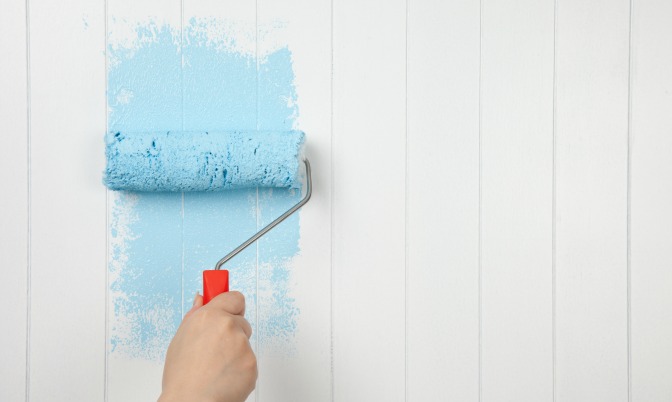You can take as many home staging courses as you want, but you’re never going to get a decisive answer on what the “right” color to paint a room is. That’s because there is no “right” color (although there may certainly be wrong ones). It all depends on the room, the look, the mood—and, of course, on your client’s preferences.
Whatever kind of designer you are, you’re guaranteed to find yourself working with a wide range of clients. Some may know exactly what they’re looking for; others may be uncertain or hesitant, turning to your professional opinion for guidance on getting a look that’s nice and timeless. For home stagers in particular, this may be a big question—if your client’s taste is a little “out there,” they’ll probably need your help settling on a color scheme that will appeal to the masses.
While there’s no single solution, there are some colors that tend to dominate certain rooms. Read on for a crash course in color as we take you through a tour of the most popular paint shades by room.
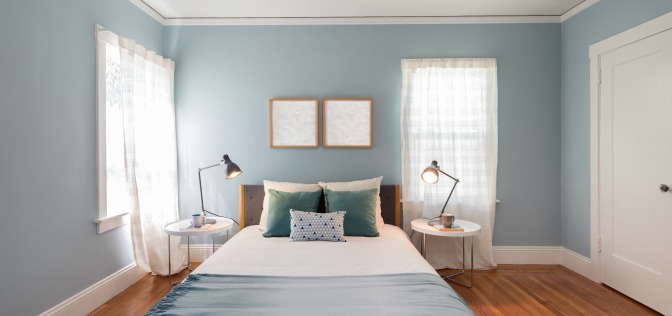 Of course, neutrals are also a common bedroom choice, unlikely to ever go out of style. Many people use neutral shades to emphasize bold accent pieces, letting some color into the bedroom without sacrificing sleep.
Of course, neutrals are also a common bedroom choice, unlikely to ever go out of style. Many people use neutral shades to emphasize bold accent pieces, letting some color into the bedroom without sacrificing sleep.
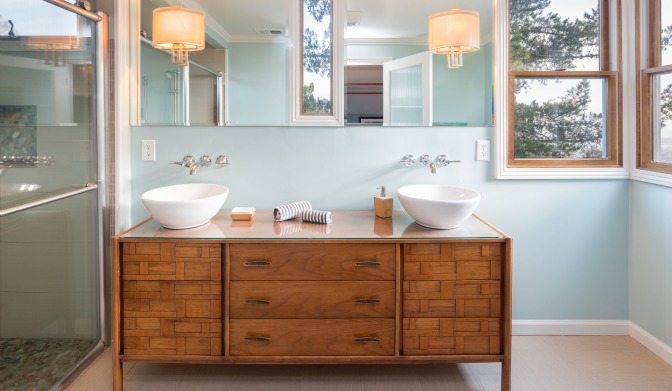 For a classy, upscale look, pairing white with black or grey is also a common choice. To keep these combinations from feeling flat or bland, many people use textures and patterns.
If you’re working on a master bathroom, it’s also common to plan the bathroom’s color scheme at the same time as the bedroom’s. There’s no need for an exact match, but picking colors that complement each other between the two rooms can help create a unified space.
For a classy, upscale look, pairing white with black or grey is also a common choice. To keep these combinations from feeling flat or bland, many people use textures and patterns.
If you’re working on a master bathroom, it’s also common to plan the bathroom’s color scheme at the same time as the bedroom’s. There’s no need for an exact match, but picking colors that complement each other between the two rooms can help create a unified space.
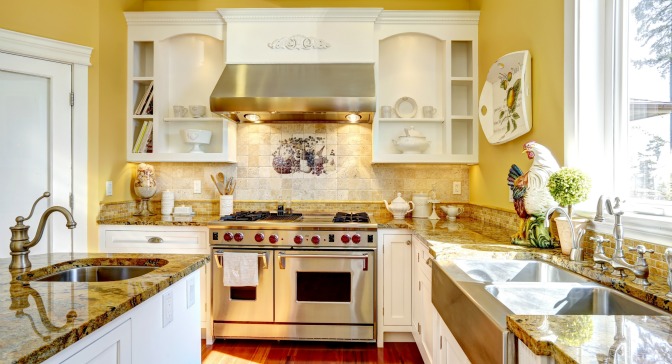
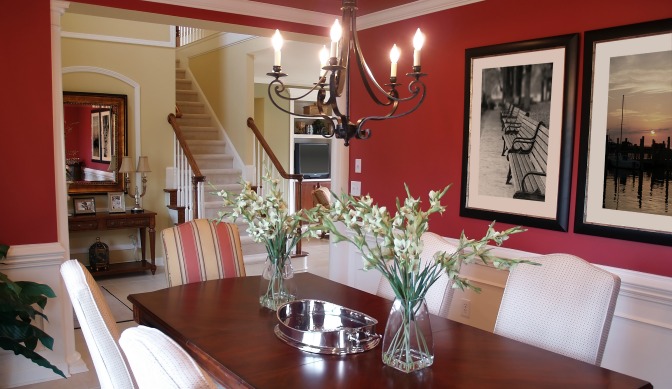

The Bedroom
The living room or dining room may be the social center of the home, but for many, it’s the bedroom that matters most. You spend a large part of your time there, after all, and a nice home won’t mean much to you if your bedroom’s design has you tossing and turning all night. A good mattress and a low-stress life may be the best route to a good night’s sleep, but many people think the color of your bedroom can also impact how rested you feel. Cool, calming blues in the bedroom can help create a restful space, perfect for relaxation and rejuvenation. While darker blues are more traditional, many people now opt for a paler tint to emulate the soothing atmosphere of a spa. Of course, neutrals are also a common bedroom choice, unlikely to ever go out of style. Many people use neutral shades to emphasize bold accent pieces, letting some color into the bedroom without sacrificing sleep.
Of course, neutrals are also a common bedroom choice, unlikely to ever go out of style. Many people use neutral shades to emphasize bold accent pieces, letting some color into the bedroom without sacrificing sleep.
The Bathroom
It’s probably no surprise to hear that blue is also a popular color for the bathroom, especially when it’s paired with a crisp, clean white. Here, paler blues and blue-greens dominate, lending an organic atmosphere to a typically small room. These natural colors are also good for rounding out hard edges of cabinets, tables, and other geometric bathroom décor. For a classy, upscale look, pairing white with black or grey is also a common choice. To keep these combinations from feeling flat or bland, many people use textures and patterns.
If you’re working on a master bathroom, it’s also common to plan the bathroom’s color scheme at the same time as the bedroom’s. There’s no need for an exact match, but picking colors that complement each other between the two rooms can help create a unified space.
For a classy, upscale look, pairing white with black or grey is also a common choice. To keep these combinations from feeling flat or bland, many people use textures and patterns.
If you’re working on a master bathroom, it’s also common to plan the bathroom’s color scheme at the same time as the bedroom’s. There’s no need for an exact match, but picking colors that complement each other between the two rooms can help create a unified space.
The Kitchen
The kitchen tends to be a busy room, which makes yellow a natural choice for creating an energizing space. Many modern homeowners are opting to forgo the paler, more subdued yellows of the past for bold hues that give the room a burst of sunshine. There’s also good reason for sticking with lighter shades, though, or toning things back even more with whites or creams. The kitchen can be a high-stress place for busy cooks, so neutral colors can help keep things feeling calm. The bedroom isn’t the only place where you need a good dose of relaxation.
The Dining Room
A formal dining room isn’t the household staple it once was; some homes may have converted the room due to disuse, while others may have dining spaces that are combined with kitchens or other rooms. For homeowners who like to entertain, though, the dining room can still be a big deal. Browns, creams, and muted greens are popular picks for a room that’s formal and traditional. Because the dining room is often the entertaining hub of the home for those who like to socialize, it also tends to be a space for trying bolder, more striking shades like deep reds or blues.
The Living Room
When it comes to living rooms, charcoal gray is gaining ground. This subdued shade is perfect for letting art, accent pieces, or pops of color stand out, particularly as an accent wall. It also works for the full room, helping to create a quiet, cozy space that’s ideal for homeowners looking for a place to unwind after a long day. Traditionally, yellow has also been a common choice for living rooms in historic homes, likely because of the way it lightens the room. Yellow’s cheery vibe helps to create a space that’s airy, welcoming and bright, attracting many modern homeowners to continue the trend.
